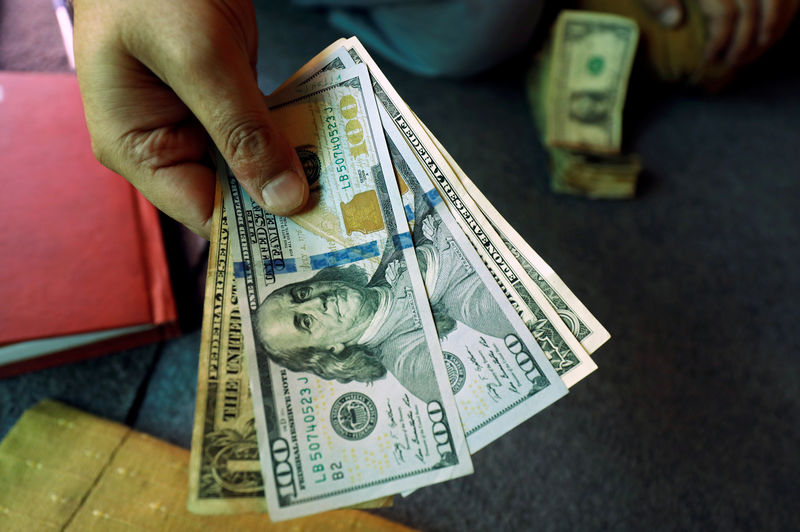By Gina Lee
Investing.com – The dollar was up on Wednesday morning in Asia, reversing Tuesday’s losses as optimism over the global economic recovery from COVID-19 and a possible acceleration in inflation drove U.S. bond yields up.
The U.S. Dollar Index that tracks the greenback against a basket of other currencies inched up 0.18% to 90.662 by 11:39 PM ET (4:38 AM GMT).
The USD/JPY pair inched down 0.10% to 105.94 The safe-haven yen, which is sensitive to U.S. yields, showed a strong reaction by falling to a four-month low against the dollar.
The AUD/USD pair inched down 0.06% to 0.7752 and the NZD/USD pair edged down 0.19% to 0.7199.
The USD/CNY pair was steady at 6.4582. The offshore yuan retreated after rising to two-and-a-half year highs on Tuesday.
The GBP/USD pair inched down 0.08% to 1.3891. The euro saw a slight dip, although the fall was cushioned gains from strong German economic sentiment data. February’s German Zentrum für Europäische Wirtschaftsforschung (ZEW) Economic Sentiment Index was 71.2, higher than the 59.6 in forecasts prepared by Investing.com and January’s 61.8 reading.
Bitcoin held firm after breaking past the $50,000 mark for the first time on Tuesday, with investors betting on a more widespread acceptance of the cryptocurrency among major companies.
The dollar rebounded from the three-week low it hit on Tuesday, as soaring U.S. bond yields also giving the U.S. Currency a boost. The ten-year yield rose 1.331% from around 1.20% at the end of the previous week.
“The move up in yields has been driven by increasing inflationary concerns amid a rise in energy prices along with the prospect of a big U.S. fiscal stimulus and the global recovery entering a more solid stage as vaccine roll out lead to the reopening of economies,” National Australia Bank (OTC:NABZY) senior FX strategist Rodrigo Catril told Reuters.
“I think the dollar’s downtrend is over. At the start of the year, speculators were betting on a fall in the dollar below 100 yen. They seem to have abandoned such a view now,” Daiwa Securities senior strategist Yukio Ishizuki told Reuters.
The New York Federal Reserve’s Empire State manufacturing report released on Tuesday also painted an upbeat economic picture. The report showed a rise in the “prices paid index”, further stoking inflation fears.
Federal Reserve Bank of St. Louis President James Bullard added to the optimism, telling CNBC that U.S. financial conditions were “generally good,” and that inflation was likely to heat up in 2021.
However, Bullard’s colleague, Federal Reserve Bank of San Francisco President Mary Daly, said that pressures on inflation are still downward, pushing against warnings that low interest rates and government spending could overheat the U.S. economy and spark high inflation.
“Her comments are not resonating with market players preoccupied with inflation at this point,” said Daiwa’s Ishizuki.
